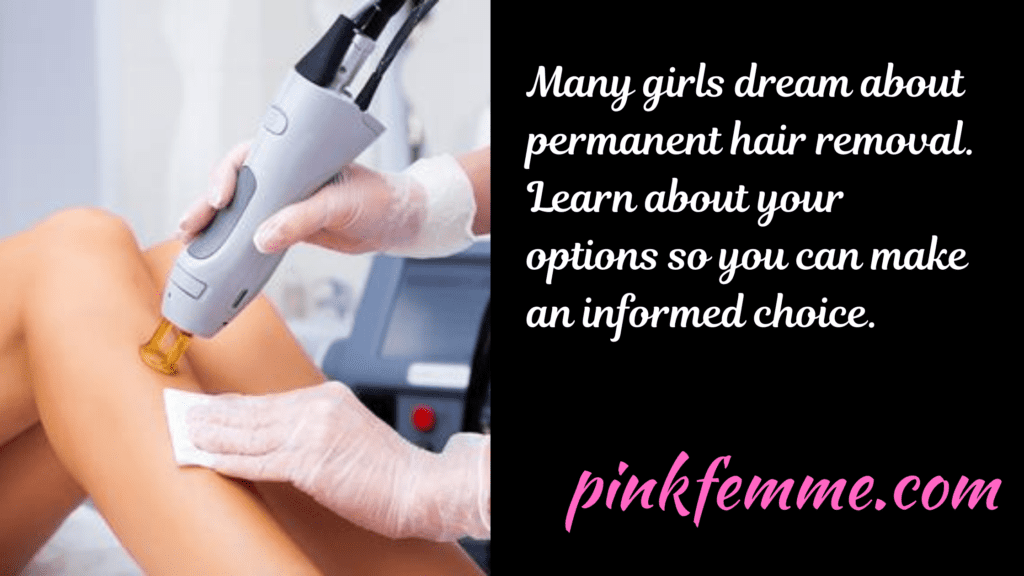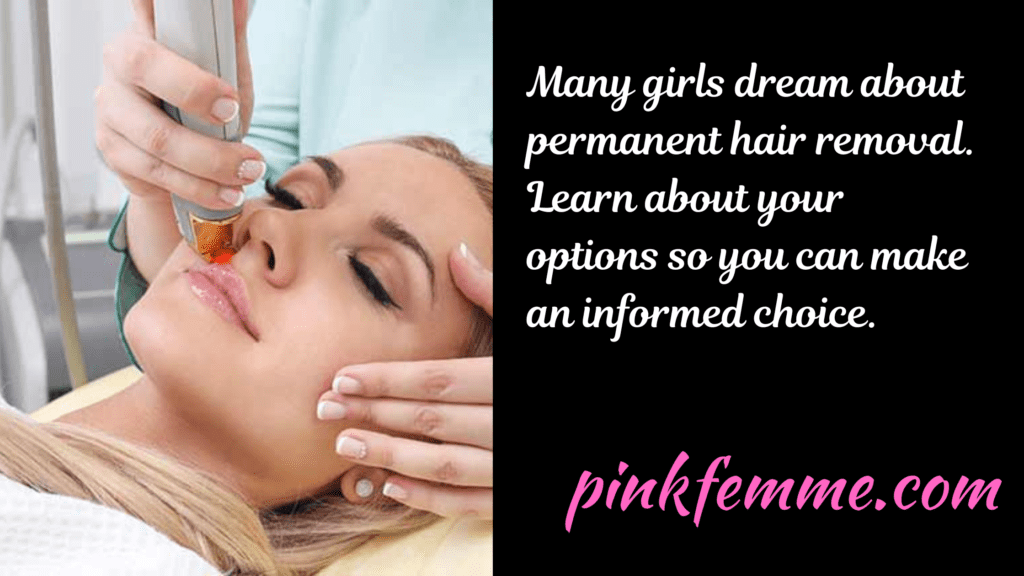
I love summer and I’m sure that you do too. I get to wear pretty sundresses and get to feel the light, soft fabric swishing against my legs as I walk in the warm sunshine. The one thing that I am not a great fan of as winter comes to an end is seemingly constant shaving.
Even though you ideally shouldn’t, you can still get away with skipping a day (or a few) of shaving in the winter. However, summer isn’t quite as forgiving as your legs are more exposed as the hems of your dresses get shorter and the fabrics lighter.
If trying to keep up with constant hair removal is getting you down, you may have started to consider permanent hair removal as a viable option. If you are like me, you probably have a few questions about what your options are.
Permanent hair removal is best performed in a clinic or salon. There is no miracle cream to permanently remove hair. The process involves destroying the hair follicle, one hair at a time. It is a slow process requiring multiple treatments to complete as the skin needs time to heal after each treatment.
Keep reading as we learn more about permanently removing hair together. Perhaps by the time we get to the end, I’ll also be booking a session.
You Have 3 Permanent Hair Removal Options
As much as I would love to tell you otherwise there is no miracle permanent hair removal cream. However, you do have three options to consider when it comes to removing your hair permanently. As regards which one of the three is best for permanent hair removal is entirely a personal choice.
Your three options for permanent hair removal are:
- Laser Hair Removal
- Intense Pulsed Light
- Electrolysis
Let’s unpack each of these three options so that you can make an informed choice about the method that makes the most sense for you.
Laser Hair Removal
As you may have guessed, laser hair removal is one of the most popular options when it comes to permanent hair removal. The Mayo Clinic states that laser hair removal uses a concentrated beam of light, or laser, that is absorbed by the pigment (melanin) in the hair. This light energy is converted to heat which damages the hair follicles that produce hair to inhibit or delay future growth. Besides your legs, you can use laser hair removal on your back, bikini area, chest, face (including the upper lip and chin), neck, and shoulder, per the American Academy of Dermatology (AAD).

While you can buy at-home laser hair removal devices, they may not be as effective as a treatment done by an experienced professional. While at-home devices can cause some hair reduction, there haven’t been any large studies comparing the effectiveness of at-home devices to professional treatments. If you’re considering getting laser hair removal, either at home or with a professional, there are a few key things to keep in mind.
- In order for laser hair removal to be effective there needs to be a contrast between your skin tone and your hair color, according to the AAD. So if you have dark hair and a light skin tone then you are a candidate for laser hair removal. Conversely, if you have a fair complexion and also have blonde, white, or gray hair, then there is no color contrast for the laser to aim at and laser hair removal might not be a good permanent hair removal option for you.
- A word of warning if you have a darker skin tone, the AAD states that people with darker skin tones are more prone to burns and hyperpigmentation as a result of laser hair removal. The last thing that I want for you is to have permanent scarring as a result of your quest for permanent hair removal, so seek treatment from a medical doctor who is extremely skilled in using lasers and has in-depth knowledge of all skin types.
- Laser hair removal causes micro burns on your skin. These burn areas are super sensitive to UV radiation and according to the FDA, sunlight should be avoided post-laser hair removal. So be sure to follow your doctor’s advice for how long you need to be avoiding sun exposure before and after each treatment. As a general rule whenever you go out, always apply a facial sunscreen with a broad-spectrum SPF of 30 or more.
Intense Pulsed Light
Using Intense Pulsed Light (IPL) is very similar to laser hair removal in the sense that they both use types of light to target melanin in the hair shaft, according to a study from the National Center for Biotechnology Information (NCBI).
The main difference between the two is that IPL does not involve the use of a laser to focus the light on only the hair shaft. IPL uses a wider range of light that helps to spread the energy around the skin’s area, therefore targeting more hair with each pulse. Unlike laser, it can be done on all skin tones, per the NCBI study.
However, because the energy is more spread out you’ll still need multiple sessions for IPL hair removal. IPL treatments expose the whole skin area to radiation you can expect blistering or crusting after each treatment. The NCBI study notes that in rare cases the skin burns can result in scarring.

Electrolysis
Your third option for permanently removing hair is electrolysis. The way electrolysis works is a thin needle that gets inserted into the opening of a hair follicle, then the hair growth cells are destroyed by a small electrical current, according to information supplied by the Cleveland Clinic.
Of the three, electrolysis is the most time-tested method. Remember that you are getting stabbed repeatedly by a little needle so it can often be painful. There is also a possibility that electrolysis can cause redness, scarring, and dark spots in areas that were previously treated.
According to the Cleveland Clinic, each session can last anywhere between 15 minutes to one hour. Electrolysis can be used to remove hair on the eyebrows, face, thighs, abdomen, breasts, and legs.
Just like with the other permanent hair removal methods you will be advised to stay out of the sun and not apply any makeup over the area that has been treated for at least 24 hours after each treatment.
